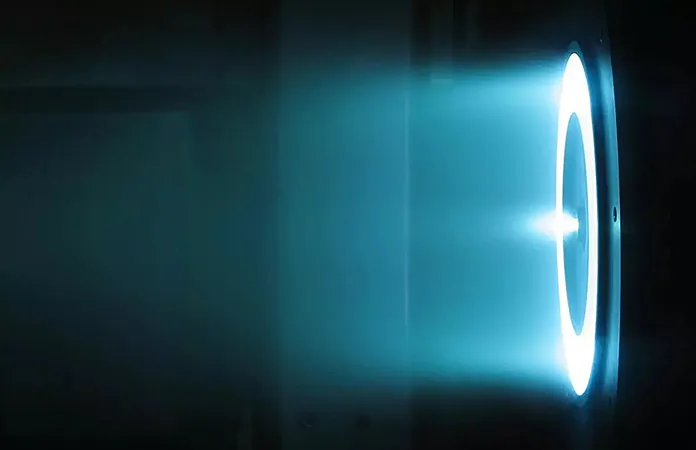
Revolutionary Discoveries in Plasma Beams Could Propel the Next Era of Space Exploration
2025-01-06
Author: Rajesh
A New Dawn for Space Exploration
Cui's cutting-edge work focuses on unraveling the complex dynamics of electrons—those tiny yet powerful charged particles—within the intricate plasma beams expelled by EP thrusters. “Although inconspicuous, their movement and energy significantly influence the overall dynamics of the plasma plume generated by the electric propulsion systems,” he explains.
Understanding the interaction of the plasma plume with spacecraft is vital. Electric propulsion works by ionizing a neutral gas, typically xenon, and harnessing electric fields to accelerate these ions, forming a powerful plasma beam that propels the craft forward.
Compared to traditional chemical rockets, electric propulsion systems are exceptionally fuel-efficient. This means longer journeys carrying less fuel, ideal for ambitious missions like NASA's Artemis program and the eventual journey to Mars.
The Lifeline of Spacecraft
However, the plume is not merely exhaust; it’s a critical component of the propulsion system. A poorly understood plume could lead to potential issues. Certain particles might flow back towards the spacecraft, risking damage to crucial elements like solar panels and communication equipment. As Cui puts it, 'For multi-year missions, EP thrusters must perform reliably, necessitating a thorough understanding of the plasma plume’s behavior to avert any complications.'
Insights from Cutting-Edge Research
Cui’s research leverages advanced computational simulations to analyze plasma behavior in EP thrusters. Utilizing cutting-edge supercomputers and a method known as Vlasov simulation, he’s shedding light on the sometimes unpredictable behavior of electrons in plasma.
Remarkably, the electrons don't follow simple models; their actions vary with temperature and speed, producing unique patterns. 'It’s akin to marbles in a tube,' notes Cui. 'The electrons inside are hot and move rapidly. As they exit the central area of the beam, they begin cooling, particularly in directions perpendicular to the beam.'
Intriguingly, Cui and Wang's research discovered a near-Maxwellian velocity distribution along the beam's direction, paired with a distinctive 'top-hat' shape in the transverse direction. These revelations could hold the key to optimizing electric propulsion technology, paving the way for unprecedented advancements in space exploration.
The Future is Now
With scientists like Chen Cui at the forefront, we are on the brink of a revolution in how we explore the cosmos. The discoveries in plasma beam dynamics may not only enhance electric thruster efficiency but also help reduce the risks associated with long-term space missions. The quest for deeper space exploration is at hand—are we ready to conquer the final frontier?

 Brasil (PT)
Brasil (PT)
 Canada (EN)
Canada (EN)
 Chile (ES)
Chile (ES)
 Česko (CS)
Česko (CS)
 대한민국 (KO)
대한민국 (KO)
 España (ES)
España (ES)
 France (FR)
France (FR)
 Hong Kong (EN)
Hong Kong (EN)
 Italia (IT)
Italia (IT)
 日本 (JA)
日本 (JA)
 Magyarország (HU)
Magyarország (HU)
 Norge (NO)
Norge (NO)
 Polska (PL)
Polska (PL)
 Schweiz (DE)
Schweiz (DE)
 Singapore (EN)
Singapore (EN)
 Sverige (SV)
Sverige (SV)
 Suomi (FI)
Suomi (FI)
 Türkiye (TR)
Türkiye (TR)
 الإمارات العربية المتحدة (AR)
الإمارات العربية المتحدة (AR)